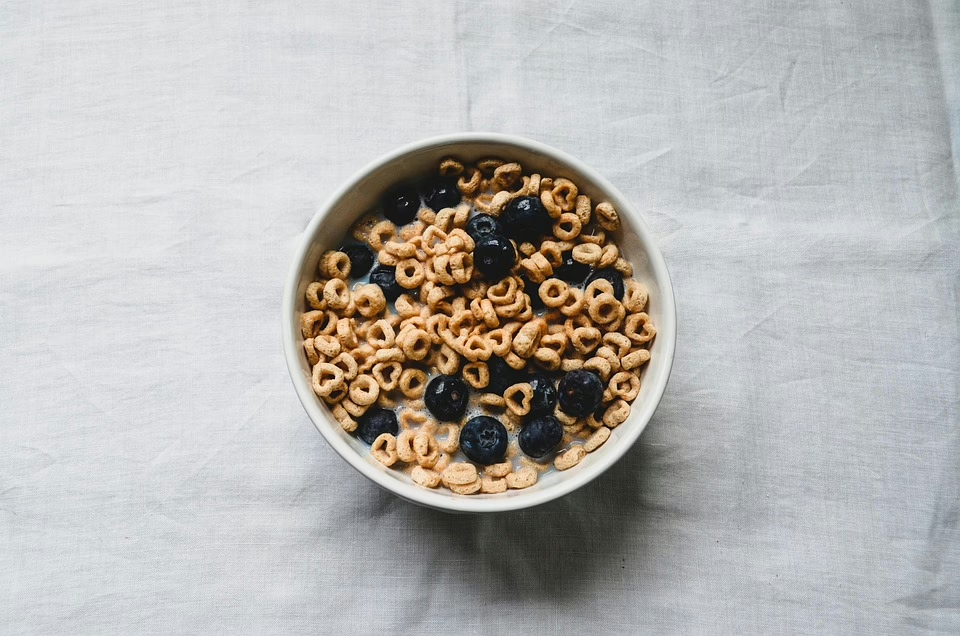Healthy Snacking: The Secret to Beating Afternoon Slumps
In today’s fast-paced world, maintaining energy and focus throughout the day can be challenging. One of the most overlooked yet effective strategies to combat the dreaded afternoon slump is healthy snacking. This article explores the benefits of healthy snacking, offers tips on choosing the right snacks, and provides a variety of options to keep your energy levels steady and your mind sharp.
Understanding the Afternoon Slump
The “afternoon slump” typically occurs between 2 PM and 4 PM, a time when many individuals feel a dip in energy and productivity. This slump can be attributed to several factors, including:
-
Circadian Rhythms: The human body operates on a natural cycle known as the circadian rhythm, which can lead to drowsiness during the early afternoon.
-
Lunch Choices: Large, heavy lunches often lead to post-meal drowsiness due to the body’s increased focus on digestion.
-
Energy Depletion: By mid-afternoon, energy reserves from breakfast and lunch may begin to dwindle, leading to fatigue and decreased concentration.
Healthy snacking can serve as a strategic intervention during this dip, providing the necessary fuel to elevate energy levels and enhance cognitive function.
The Benefits of Healthy Snacking
Healthy snacking offers numerous benefits, including:
1. Sustained Energy Levels
Consuming small, balanced snacks can provide a steady source of glucose to the bloodstream, preventing energy crashes. Complex carbohydrates, healthy fats, and proteins all contribute to sustained energy levels.
2. Improved Focus and Productivity
Nutritious snacks support brain function by providing essential nutrients that enhance cognitive performance. Foods rich in omega-3 fatty acids, antioxidants, and vitamins are particularly beneficial for mental clarity.
3. Craving Control
Healthy snacks can help curb cravings for unhealthy options by providing satiety. Foods high in fiber and protein tend to be more filling, reducing the likelihood of overindulging later in the day.
4. Nutrient Boost
Snacks can be an excellent opportunity to increase the intake of vital nutrients. Incorporating a variety of fruits, vegetables, nuts, and seeds can help meet daily requirements for vitamins and minerals.
5. Enhanced Mood
Certain foods can positively influence mood and mental well-being. For example, dark chocolate and nuts contain compounds that have been shown to improve mood and reduce anxiety.
Choosing the Right Snacks
When selecting snacks, it’s crucial to focus on quality ingredients that offer maximum nutritional value. Here are some guidelines to consider:
1. Look for Balance
A balanced snack should contain a combination of macronutrients: carbohydrates, protein, and healthy fats. This combination helps provide sustained energy and keeps hunger at bay.
2. Go for Whole Foods
Aim for whole, minimally processed foods that are rich in vitamins, minerals, and fiber. These types of snacks are typically more satisfying and nutritious than processed alternatives.
3. Portion Control
While healthy snacks are great, it’s essential to practice portion control. Mindful eating helps prevent overeating and allows you to enjoy your snacks without guilt.
4. Avoid Added Sugars
Many packaged snacks are laden with added sugars, which can lead to quick energy spikes followed by crashes. Opt for snacks that are naturally sweetened or contain no added sugars.
5. Experiment with Variety
Variety is key to preventing snack fatigue. Explore different combinations of flavors and textures to keep things interesting and enjoyable.
Healthy Snack Ideas
Here are some nutritious snack ideas that can help you power through the afternoon slump:
1. Greek Yogurt with Berries
Greek yogurt is rich in protein and probiotics, while berries provide antioxidants and fiber. This combination aids digestion, stabilizes blood sugar, and keeps you full.
2. Hummus with Vegetables
Hummus, made from chickpeas, offers protein and fiber, while fresh vegetables like carrots, bell peppers, and cucumber provide crunch and hydration.
3. Nut Butter and Apple Slices
Spread almond or peanut butter on apple slices for a satisfying snack that combines healthy fats, protein, and carbohydrates.
4. Trail Mix
A mix of nuts, seeds, and dried fruits provides a balanced snack rich in healthy fats, fiber, and natural sugars. Just be mindful of portion sizes, as nuts can be calorie-dense.
5. Whole Grain Crackers and Cheese
Whole grain crackers paired with a slice of cheese offer a satisfying balance of carbohydrates and protein, making for a filling snack that keeps energy levels stable.
6. Smoothie
A quick smoothie made with fresh or frozen fruits, leafy greens, and a scoop of protein powder or nut butter can be a nutrient-dense pick-me-up.
7. Dark Chocolate and Almonds
Opt for a small serving of dark chocolate (at least 70% cocoa) alongside a handful of almonds. This combination offers antioxidants, healthy fats, and a satisfying crunch.
8. Popcorn
Air-popped popcorn is a whole grain snack that’s low in calories when enjoyed plain or lightly seasoned. It provides fiber and can be a great way to satisfy the urge to munch.
9. Chia Pudding
Mix chia seeds with almond milk and let it set for a few hours or overnight. Chia seeds are rich in fiber and omega-3s, making this a nutritious option.
10. Edamame
Boiled edamame makes for a protein-rich, satisfying snack that’s easy to prepare and enjoy.
The Impact of Hydration
While snacking is essential for maintaining energy levels, hydration plays a crucial role as well. Often, feelings of fatigue can result from dehydration. Here are some tips to ensure you’re adequately hydrated:
- Drink Water: Aim for at least 8 cups of water daily, adjusting according to physical activity and climate.
- Herbal Teas: Consider switching up your beverage choice with caffeine-free herbal teas, which can provide hydration without the jitters of caffeine.
Mindful Snacking
Engaging in mindful snacking can heighten your awareness of hunger signals and improve overall eating experiences. Practice the following techniques:
- Slow Down: Take time to savor your snack, noticing its textures and flavors.
- Portion It Out: Instead of snacking straight from the package, portion out servings to avoid overindulgence.
- Listen to Your Body: Pay attention to your body’s hunger cues. Snack when you’re genuinely hungry, not just out of boredom.
Conclusion
Healthy snacking is a powerful tool for combating afternoon slumps, enhancing energy, and improving focus. By making informed choices and prioritizing nutrient-dense options, individuals can maintain productivity and overall well-being. With the right approach to snacking, you not only nourish your body but also foster a lifestyle that supports sustained energy throughout the day.
Incorporating these habits into your daily routine can lead to a more balanced and fulfilling lifestyle, ultimately arming you against the afternoon fatigue that many face. Remember, the key to effective snacking lies not just in the type of foods you choose, but also in how you approach them. Happy snacking!
Footnotes
- American Heart Association. “The Benefits of Healthy Snacking.” American Heart Association, 2022.
- Harvard Health Publishing. “How to Manage Afternoon Slumps.” Harvard Medical School, 2023.
- National Institutes of Health. “Nutrition, Snack Choices, and Energy Levels.” NIH, 2022.
- Centers for Disease Control and Prevention. “Healthy Eating: Strategies for Snacking.” CDC, 2023.
- Mayo Clinic. “Healthy Eating: The Importance of Snacks.” Mayo Clinic, 2023.
This article might be quite extensive, but it provides a comprehensive examination of healthy snacking and its impact on maintaining energy levels and focus throughout the day. For further reading or resources, please consult reputable nutritional guidelines and research articles on the subject.


























Add Comment